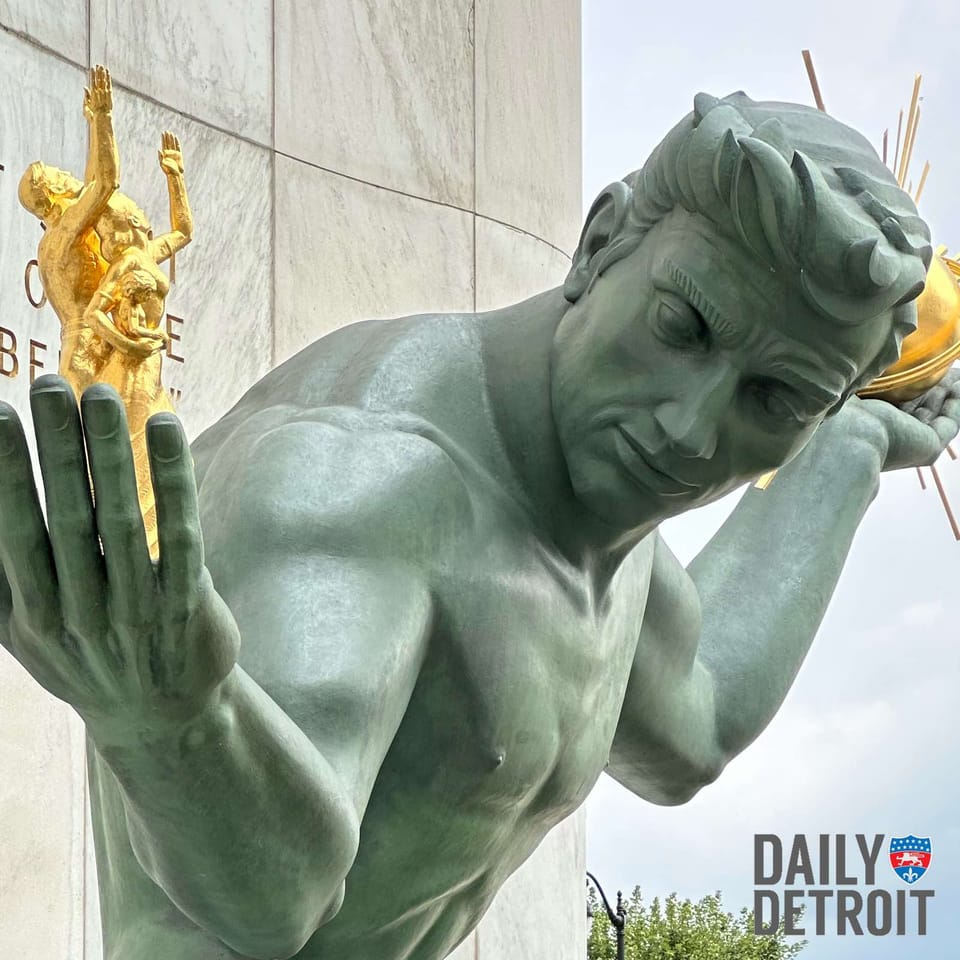Detroit’s history is full of bizarre stories and fascinating characters, yet many of the strangest still lurk in the faded clippings of old newspapers, lost amid the forgotten of pile media rubble.
One such story is that of Thomas Lynn Bradford.
A Detroit resident in the early 1900s, Bradford was an interesting character. Professionally, he was something of a job hopper, spending time as an electrical engineer, professional athlete, and even as an actor. Toward the end of his life, though, Bradford turned his attention to some deeper explorations.
[quote_center]Spiritualists view the after life as a place where spirits continue to live and evolve once the soul has left the physical body at the time of death[/quote_center]
He began to study spiritualism, which, broadly defined, is the belief that humans don’t really die, but rather, they live on as spirits who can still communicate with the living world. Spiritualists view the after life as a place where spirits continue to live and evolve once the soul has left the physical body at the time of death, and they seek to communicate with the living world in order to share valuable information regarding important moral and ethical issues, as well as the nature of God.
Bradford wrote essays and gave lectures on spiritualism, the occult and other supernatural topics, and even marketed himself as a psychic in the Detroit area.
Then, on the evening of February 6, 1921, Bradford shocked the Detroit community when sealed off his apartment, put out the pilot light on his heater and cranked the gas. He was later found dead by police by way of asphyxiation. Found in his typewriter was a page of an unfinished manuscript with a quote that read, “— and it is through scientific facts that I propose to demonstrate clearly the phenomena of the spirits, and prove that all the phenomena are outside the domain of the supernatural.”

The Search For Answers
Police were baffled by the apparent suicide and cryptic note and began an investigation. Before long, their search for clues led them to a woman named Ruth Doran.
As it turns out, several weeks before his suicide, Bradford had posted an ad in the local paper looking to hire someone “interested in the spiritualistic sciences.” Doran, a roughly 40-year-old writer and lecturer from a prominent Detroit family, had recently returned to the city to work on a historical research project.
Doran told police she was a member of the Protestant Episcopal Church, and had no ties to the spiritualistic community, but simply found the ad intriguing and decided to respond. Further, she repeatedly stated that while Bradford told her that he planned to prove that spirits cold speak to the living, he never said he planned on committing suicide as part of the experiment.
Eventually, police concluded that she was telling the truth. They could find no motive for a murder, largely because as it turns out, Bradford was struggling financially when he died.
So the investigation ceased and the death was ruled a suicide. And once the police backed off the investigation, the truth behind Bradford’s seemingly senseless suicide began to take shape.

The Afterlife
Doran soon began executing the later half of the plan. Gathering a group of Detroit area Spiritualists, she hosted a series of séances at her home in an attempt to hear Bradford calling from the beyond. Despite her best efforts, though, the group could not make contact.
Still, Doran did not lose her optimism, telling The New York Times in February of 1921, “I am his friend, if he can cause his spirit to come back to earth, I believe his spirit will come back to me first. I believed in him in life, and I will wait and see if there is any spirit manifestation. If there is such a thing as spirit communication, I believe he will make his presence known to me.”
Hearing Voices
That same week, a theosophist and spiritualist by the name of Lulu Mack came out of the woodwork, telling the local newspapers that she had been contacted by Bradford’s spirit, despite having no knowledge of him or his experiment.
She told reporters that she had felt a sense that she was being called on by an unknown spirit, and had held a séance at her home to get to try and connect with whoever was calling her. During the seance she claimed to have heard the faint voice of a spirit repeatedly calling the name, “Thomas Bradford.”
When reporters pushed her for answers as to why he had contacted her and not Doran, she explained that because Bradford had only entered “the first sphere of the heavenly constellation,” he would be unable to communicate strongly enough for someone like Doran to hear, and further, that it might take years before his spirit achieved the necessary strength to do so. She purported that this was due in part to the nature of his death. Suicide was considered “neither wise nor right”, in the spiritualist belief system, and thus, it would take time for his soul to repent for the decision in the afterlife, and attain the power to speak with the living.
Despite her claim, there was still no conclusive evidence that Bradford’s experiment had worked.
A Fainting Spell
The final piece of the puzzle came soon after Mack’s story surfaced, when Ruth Doran gathered a group of spiritualists for one more shot at connecting with Bradford.
That night, as Doran stood in her parlor with the group, she suddenly exclaimed that she could hear the professor speaking to her. With hands on temples and eyes closed, she cried out for one of the members of the group to grab a pen and pad, and then she recited this message supposedly from Bradford’s spirit.
[quote_box_center]“I am the professor who speaks to you from the Beyond. I have broken through the veil. The help of the living has greatly assisted me. I simply went to sleep. I woke up and at first did not realize that I had passed on. I find no great change apparent. I expected things to be much different. They are not. Human forms are retained in outline but not in the physical. I have not traveled far. I am still much in the darkness. I see many people. They appear natural. There is a lightness of responsibility here unlike in life. One feels full of rapture and happiness. Persons of like natures associate. I am associated with other investigators. I do not repent my act. My present plane is but the first series. I am still investigating the future planes regarding which we in this plane are as ignorant as are earthly beings of the life just beyond human life.”[/quote_box_center]
Immediately after dictating the message, Doran collapsed to the ground. When she came to, she swore she had reached Bradford, “I am convinced. I never heard a spirit voice before. That was the professor, without doubt.”
[quote_center]One can’t help but wonder if it was all just a well-planned hoax … or if he really did make contact with the two women.[/quote_center]
Implications of the experiment and Bradford’s legacy
Despite the claims of each woman — one a devout spiritualist, one a protestant — neither the spiritualist community nor the general population were convinced that Bradford’s experiment had worked, and that his spirit successfully communicated with the living world.
Soon after the two supposed connections, the media attention around the startling event died down. As for Doran and Mack, both faded into obscurity, and we found no record of what became of either one.
Sadly, the outcome for Bradford was more or less the same. Since the initial claims of connecting with his spirit, there is no record of anyone in the spiritualistic community or elsewhere who have recorded successful connections with his spirit; and it seems that very few have even tried.
In he end he didn’t change the world. He didn’t prove his that his hypothesis was true, and he certainly didn’t leave a mark in the history books. Instead, Bradford’s legacy is nothing more than a bizarre and somewhat tragic story that has faded into the abyss of time.
Still, despite the way the story ended, one can’t help but wonder if it was all just a well-planned hoax … or if he really did make contact with the two women.
I guess we’ll all find out the truth one day.















